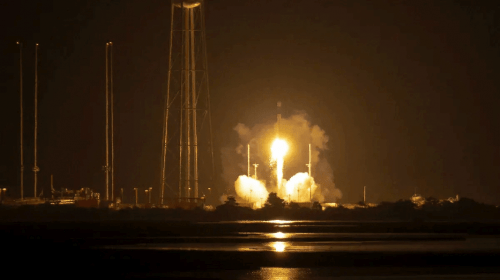Is NexTenna the FPA LEO Has Been Looking For?
Jan 29, 2022
In May 2019 we discussed an intriguing development for a new FPA (Flat Panel Antenna) that would operate at high speeds with LEO (Low Earth Orbit) and perhaps other satellites, to deliver high-capacity services at a low cost. At that time, we discussed the Wafer FPA developed by CEO and founder Dedi David Haziza, who is well-known in the antenna industry with numerous patents to his name. In “Wafer Thin” we discussed why specialized FPAs are required for the LEO market. In this article we’ll talk about how this antenna development has progressed and whether NexTenna’s new FPA may be a game changer.
The Issue

Starlink’s terminal is the best place to start. Aside from some unexpected connectivity challenges due to the antenna’s self-heating characteristics that attract local pets, this is a “stripped down” antenna, using a minimum number of phase shifters, as the only obvious way to reduce costs. However, this restricts the antenna to accessing only a single orbital plane, and Starlink satellites will occupy multiple orbital planes. The antenna lacks the ability to address the entire sky, and it can’t perform 25ms beam switching maneuvers required to prevent interference with OneWeb and GEO constellations. The antenna is sold to consumers for $500, but analysts say it costs about $2500 to manufacture.
Haziza, who worked for Google developing the antenna technology that ended up at Starlink, is very familiar with the design. In an interview with Satellite Mobility World (Jan 2022), he claims it is far too limiting, having accepted major compromises to reduce costs. He claims the antenna can’t access the entire sky at lower latitudes, which locks out much of the continental U.S. market. Haziza says Starlink needs a steerable active phase array antenna; a new design that has the pricing to reach the mass market and the ability to meet ITU and FCC regulations. These regulations require that Starlink antennas shift beams from one satellite to another in less than 25 milliseconds. This is critical to avoid interference with existing GEO satellites, and competitor OneWeb’s LEO constellation satellites.
Catch22
Unfortunately, the cost of building conventional ESA (Electrically Steered Antenna) antennas that will operate efficiently with the Starlink constellation is prohibitive. The antenna would have to be larger to provide a full-sky service. Haziza says a 60 cm phased array antenna that will meet the specifications Starlink needs, will require 4000 individual, separate elements for transmit, and another 4000 for receive. Haziza estimates that it would need 1.4 Kw of power in duplex (transmit and receive) mode, and 800 watts in one-way mode, and would come in at a cost of about $8000, which is clearly going in the wrong direction! Something learned early in the satellite business, is that it’s like a balloon. If you push it in here, it comes out there, so how do you reduce the antenna cost?
One alternative is to make the antenna smaller. If it’s cut in half, and the number of elements is reduced to 2000, the cost gets to $2500, about where it is now. However, since efficiency drops off with the smaller size, it will now need 500 watts of power, and the satellite transponder will require four times as much bandwidth to provide the same data rate. Reducing the size of an antenna requires more power on the satellite and the broadband business is all about converting power to bandwidth. At this point, it’s a trade-off between antenna cost and service cost, however quadrupling the cost of operations to support a smaller, less expensive antenna, is a business model that does not work.
NexTenna

In researching this article, we turned back to Wafer, referenced in the introduction above. There were no new product updates on the Wafer website, but a little searching led to SderoTech, Inc. who is doing business as NexTenna, and Dedi Haziza is the CEO. SderoTech references Wafer in their “About Us” description, but the relationship between the companies is unclear to this author, other than they share the same CEO.
In any event NexTenna, has come up with a new way to manufacture the antenna. In conventional ESA technology, individual components are soldered to a PCB board. NexTenna instead, prints the phased array elements on the PCB. This has a significant impact on scalability. Imbedding the elements into the material, incurs a cost increase as the antenna is made larger, however the cost increases linearly, rather than exponentially as in the case with conventional designs. The increase in cost is associated with the additional PCB material. The controller stays the same size, regardless of the PCB. Scaling an antenna from two-foot to three-foot will incur perhaps a 20% increase in cost, whereas the conventional method of production costs some 300% more because of the need to purchase and install thousands of discrete hardware elements.

Haziza says NexTenna plans to produce antennas on a small scale, starting in March 2022, producing a couple thousand panels per month, to begin to seed the market with the antennas. A new manufacturing facility will be needed to scale up to millions of units, which will drive down prices as production costs drop due to volumes. NexTenna is building a Ka-band antenna that is in final stages of development. There are also plans to develop antennas for the LEO spacecraft, which would make it possible to steer beams from the ground to the correct satellite, and from the satellite to the correct terminal. Haziza says NexTenna can deliver a high power, low weight antenna for spacecraft.
It seems the race to design more efficient and particularly affordable flat panel antennas for the consumer market, continues, albeit at a slow and cautious pace. We continue to watch developments with interest.
Author: Patrick Gannon
Jan 27, 2022





